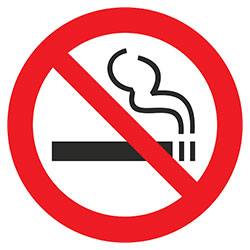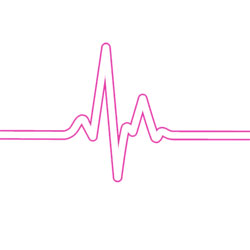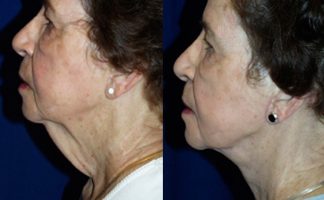What is a Neck lift?
Dr. Ricardo Rodriguez has performed has performed has performed hundreds of neck lifts in Baltimore using his signature technique that combines platysmaplasty with elements of a lower facelift to sculpt the neckline and sharpen the jawline with natural-looking results.
A neck lift is a surgical procedure that defines the neckline and tightens loose skin around the jawline (jowls). It can also reduce neck banding, creating a smoother and more youthful appearance.
Types of Neck Lifts
There are two types of neck lifts, each serving different patient needs.
- Platysmaplasty (Neck Tuck): This procedure focuses exclusively on tightening neck bands under the chin, which can create an unsightly appearance. It does not address loose jowls at the jawline.
- Lower Facelift (Lower Rhytidectomy): A more comprehensive procedure, this tightens neck bands and loose skin at the jawline, refining the overall jawline.
Over the past few years, Dr. Ricardo Rodriguez, a Baltimore Plastic Surgeon, has combined the two types of Neck Lifts into one procedure. In summary, his neck lift is a combination of a platysmaplasty and a lower facelift. Patients get a much more defined jawline, compared to the traditional platysmaplasty, without the down time of the full lower facelift. It is the best of both worlds.
What Issues Can a Neck Lift Address?
How can I get rid of my turkey neck?
A neck lift can correct multiple signs of aging depending on the procedure type and the patient's anatomy.
Platysmaplasty (Neck Tuck)
This procedure benefits patients who experience:
- Banding or cording on the neck
- A double chin caused by excess fat
Patients who don't have sagging jowls will find this procedure focuses primarily on tightening the area beneath the chin. However, in my experience, the results are not long lasting. To tighten the jawline, elements of the lower facelift must be incorporated.
Lower facelift (Lower rhytidectomy)
For more extensive aging or weight-related concerns, a lower facelift can improve:
- Wrinkling on the neck
- Loose or crepey skin ("turkey neck")
- Sagging jowls
- A poorly defined jawline
- Banding or cording on the neck
- A double chin
Why Dr. Rodriguez’s Neck Lift Includes a Partial Lower Facelift
Many patients don’t realize that tightening under the chin alone won’t fix sagging jowls or restore a defined jawline. That’s why Dr. Rodriguez combines a platysmaplasty with targeted lower facelift elements, refining the entire neckline from just below the chin to the jaw.
This hybrid approach allows for:
- Natural, vertical lift of the lower face
- Better contouring along the jawline
- Long-lasting results with minimal visible scarring

“Dr. Rodriguez is a subject matter expert with extensive knowledge and professionalism. I highly recommend him.”
Deborah
Other neck procedures
Younger patients with good skin tone but fatty tissue under the chin might benefit more from liposuction.Additionally, patients with a smaller chin may dramatically improve their overall facial appearance with a chin implant combined with a neck lift.
How is a Neck lift performed?
Dr. Rodriguez performs neck lift surgery under IV sedation in our Quad A-accredited outpatient surgical center in Baltimore. The combined neck lift procedure typically takes 4 hours.
Incisions Hidden Around the Ear
Rather than making an incision under the chin, Dr. Rodriguez begins with a hidden incision placed near the tragus (in front of the ear), extending slightly behind the ear. This placement minimizes visible scarring.
Vertical Lifting for a Natural Jawline
From this access point, Dr. Rodriguez lifts tissue in a vertical vector, not just pulling back, but upward, to tighten the neckline and sharpen the jawline.
Combination of Neck and Lower Face Correction
Dr. Rodriguez’s neck lift includes a partial lower facelift to address sagging jowls and skin laxity along the jawline. This combination allows for more comprehensive, longer-lasting results — without the downtime of a full facelift.
For patients who require more extensive correction, he may recommend a complete lower facelift.
What are the preoperative requirements?

- Quit smoking at least 4 weeks before surgery
- Stop taking multivitamins, herbals, and aspirin 2 weeks before surgery
- Get a medical clearance, including a physical examination and CBC blood test, within 30 days of your surgery
- Fill all necessary prescriptions before the surgery date
- Do not eat or drink anything after midnight on the night before surgery
What is Neck lift Post-Op recovery like?
After surgery, a surgical garment or headband will be placed around your neck to maintain a good contour. For both types of neck lifts, you'll be asked to sleep with your head elevated (above your heart) to aid in the healing process and diminish swelling.
While there will be some swelling and bruising, you should not apply ice to your neck area since it can hinder blood flow. Drains are sometimes used with the Platysmaplasty (Neck tuck), and almost always used with the Lower rhytidectomy (Lower facelift). When Dr. Rodriguez performs the combination procedure, patients are required to have a drain for 1-2 days.
Follow these recovery tips:
- Keep the surgical garment in place for the first 24 hours
- Wear the neck garment for 1 week
- Sleep with your head elevated for the first week
- Avoid applying ice to the area
- Drains, if used, will be removed in the office 2 days post-op
You will have post-op appointments at 2 days, 1 week, 1 month, and 4 months. Here is a general recovery timeline:
- Return to work after 1 week for Platysmaplasty and 2 weeks for a Lower Facelift
- Resume light exercise at 2 weeks
- Resume full activities in 4-6 weeks
- Most bruising will resolve within a month
What are the risks and possible complications?

- Anesthesia-related risks
- Bleeding
- Hematoma
- Infection
- Swelling
- Scarring
- Revision surgery to reine results
How much does a Neck lift cost?
The cost of a neck lift depends on the type of procedure performed. Total costs for 2025 include the surgeon's fee, operating room fee, anesthesiologist's fee, recovery room, post-op garments, and follow-up visits.
| Type of Neck lift | 2025 Price |
|---|---|
| Platysmaplasty (Neck tuck): tighten neck bands only | $5,000 |
| Lower faceLift (Lower rhytidectomy): tighten neck bands and jawline/jowls | $9,500 estimated |
| Combination Neck lift procedure: a platysmaplasty combined with elements of the lower face lift | $8,500 |
During your initial evaluation and consultation, we will give you an exact quote customized to your specific needs.
“Amazing doctor, missus is very happy with the results. Communication and ‘bedside manner’ are top notch, highly recommend.”
G. C.
Can I finance my Neck lift?
Yes, financing options are available to help manage the cost of your neck lift. Call us at 410-404-8100 or see our financing page for more information.
Dr. Rodriguez: Trusted neck lift surgeon in Baltimore
With decades of surgical experience, Dr. Ricardo Rodriguez has refined his approach to neck rejuvenation by combining platysmaplasty with a lower facelift technique. He performs all procedures in our Quad A-accredited surgery center in Baltimore, Maryland, using gentle IV sedation for patient comfort and safety.
Every patient receives direct access to Dr. Rodriguez before and after surgery, as well as personalized follow-up care throughout their recovery.
Every detail of the surgical plan is tailored to each patient’s anatomy and goals, ensuring results that look natural and balanced.
Ready to explore what's possible?
BOOK A COURTESY CONSULT TODAY!
We're looking forward to helping you look and feel your best,

Board Certified Plastic Surgery, ASPS Member
NOTICE
Patients depicted in our before and after galleries have provided their written consent to display their photos online. Every patient is unique, and surgical results may vary. Please contact us if you have any questions.

